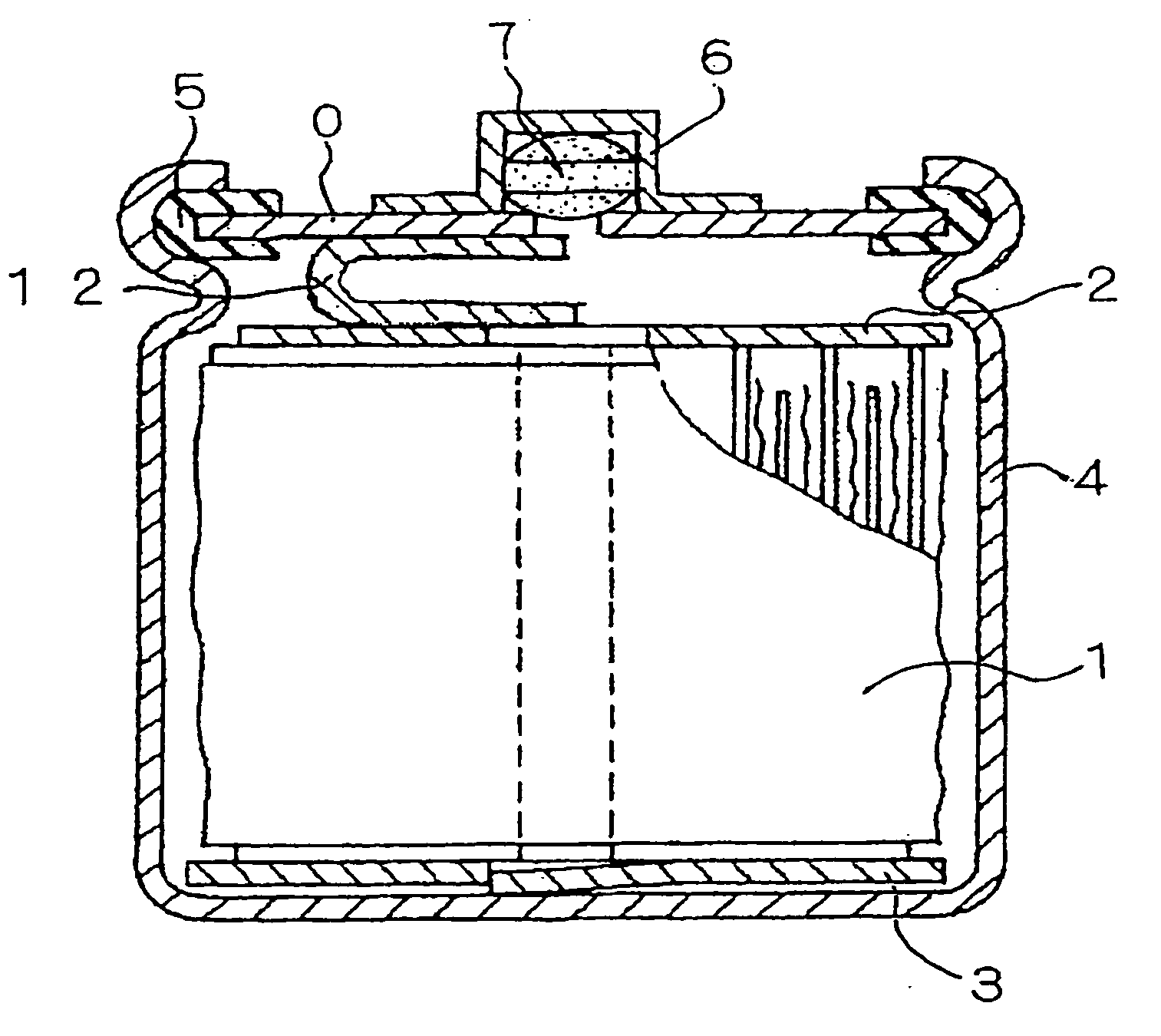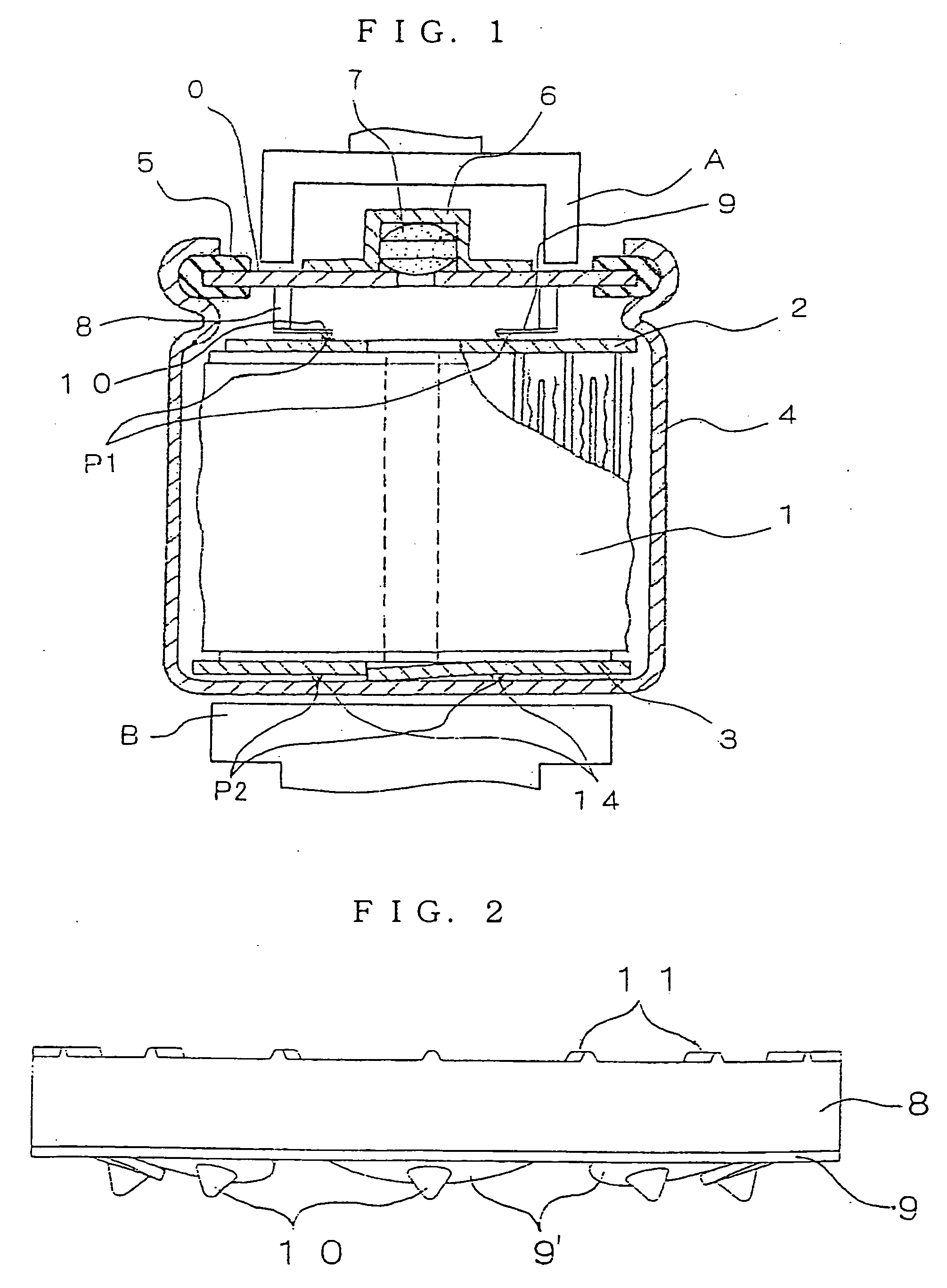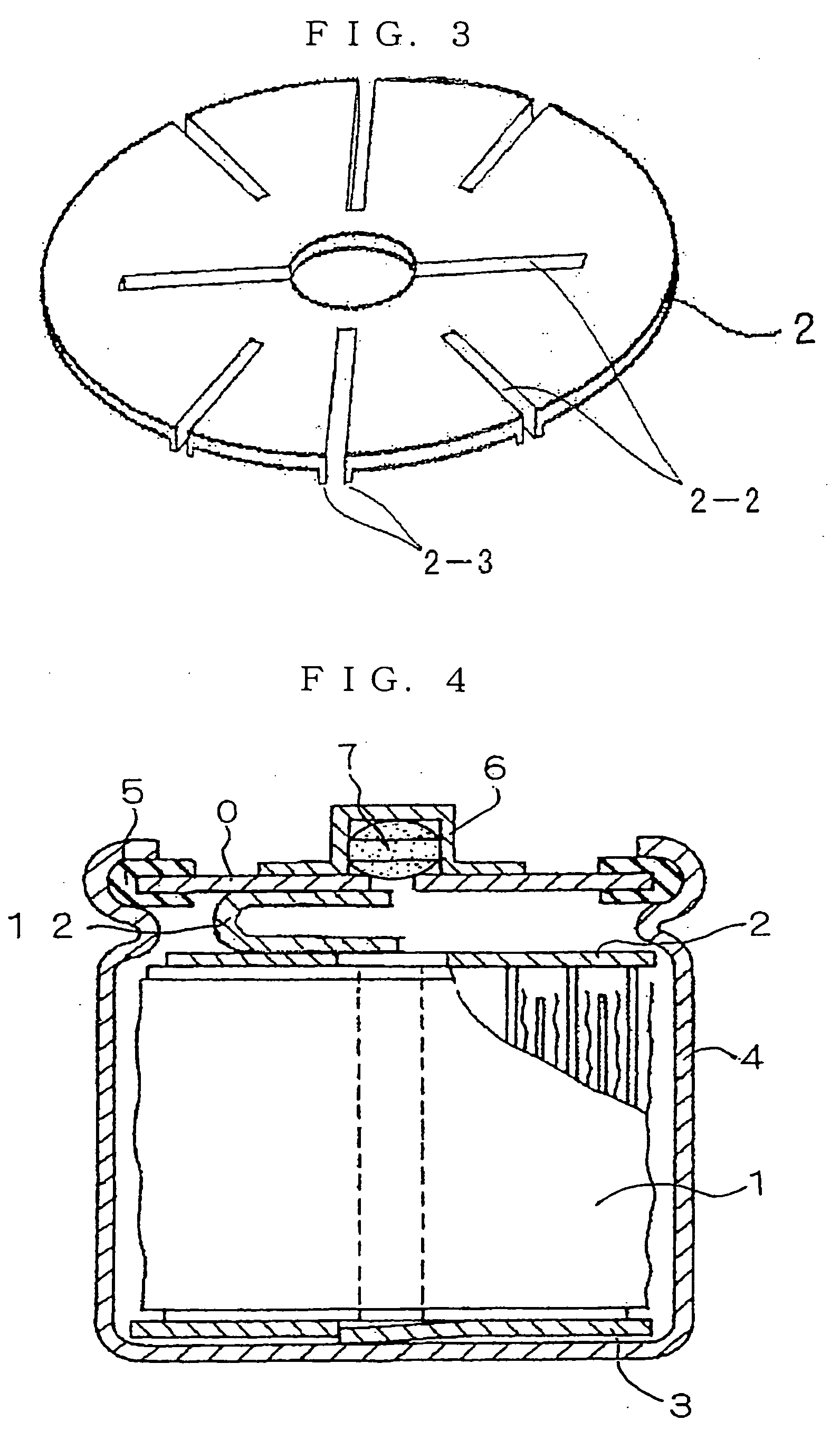Nickel Metal-Hydride Battery
a technology of metal-hydride batteries and nickel accumulators, which is applied in the direction of nickel accumulators, cell components, sustainable manufacturing/processing, etc., can solve the problems of requiring high output power performance and a long service life, and the accompanying methods of patent documents 1 and 2 are difficult to maintain cycle performance by either method of patent documents 1, so as to achieve excellent output power performance and good cycle performance. , the effect of excellent output power performan
- Summary
- Abstract
- Description
- Claims
- Application Information
AI Technical Summary
Benefits of technology
Problems solved by technology
Method used
Image
Examples
example 1
Preparation of Negative Electrode Plate
[0096]A hydrogen absorbing electrode plate was prepared with a rate of filling hydrogen absorbing alloy powder per unit area of 0.07 g / cm2, using the hydrogen absorbing alloy powder C. More specifically, 1 weight portion of Er2O3 showing an average particle size of 5 μm, 0.65 weight portions of styrenebutadiene copolymer, 0.3 weight portions of hydroxylpropylmethylcellulose (HPMC) and a predetermined quantity of water were added to 100 weight portions of hydrogen absorbing alloy powder and the mixture was kneaded to produce paste of the mixture. Then, the paste was applied to a negative electrode substrate of a punched and nickel-plated steel plate and subsequently dried at 80° C. Then, the electrode plate was pressed to make it show a porosity of 20%. After the press process, the electrode plate of the obtained negative electrode (hydrogen absorbing electrode) had a width of 48.5 mm, a length of 1,180 mm and a capacity of 11,000 mAh (11.0 Ah) ...
example 2
[0110]A nickel metal-hydride battery having a structure similar to the nickel metal-hydride battery of Example 1 was prepared except that the hydrogen absorbing alloy powder B (with saturation mass susceptibility of 2 emu / g) whose duration of immersion in the surface reforming process differed from the hydrogen absorbing alloy powder C was used. Then, a charge / discharge cycle test was conducted as in Example 1 and the output density was observed. This example is referred to as Example 2.
example 3
[0111]A nickel metal-hydride battery having a structure similar to the nickel metal-hydride battery of Example 1 was prepared except that the hydrogen absorbing alloy powder D (with a saturation mass susceptibility of 6 emu / g) whose duration of immersion in the surface reforming process differed from the hydrogen absorbing alloy powder C was used. Then, a charge / discharge cycle test was conducted as in Example 1 and the output density was observed. This example is referred to as Example 3.
PUM
| Property | Measurement | Unit |
|---|---|---|
| particle size | aaaaa | aaaaa |
| temperature | aaaaa | aaaaa |
| temperature | aaaaa | aaaaa |
Abstract
Description
Claims
Application Information
 Login to View More
Login to View More - R&D
- Intellectual Property
- Life Sciences
- Materials
- Tech Scout
- Unparalleled Data Quality
- Higher Quality Content
- 60% Fewer Hallucinations
Browse by: Latest US Patents, China's latest patents, Technical Efficacy Thesaurus, Application Domain, Technology Topic, Popular Technical Reports.
© 2025 PatSnap. All rights reserved.Legal|Privacy policy|Modern Slavery Act Transparency Statement|Sitemap|About US| Contact US: help@patsnap.com



